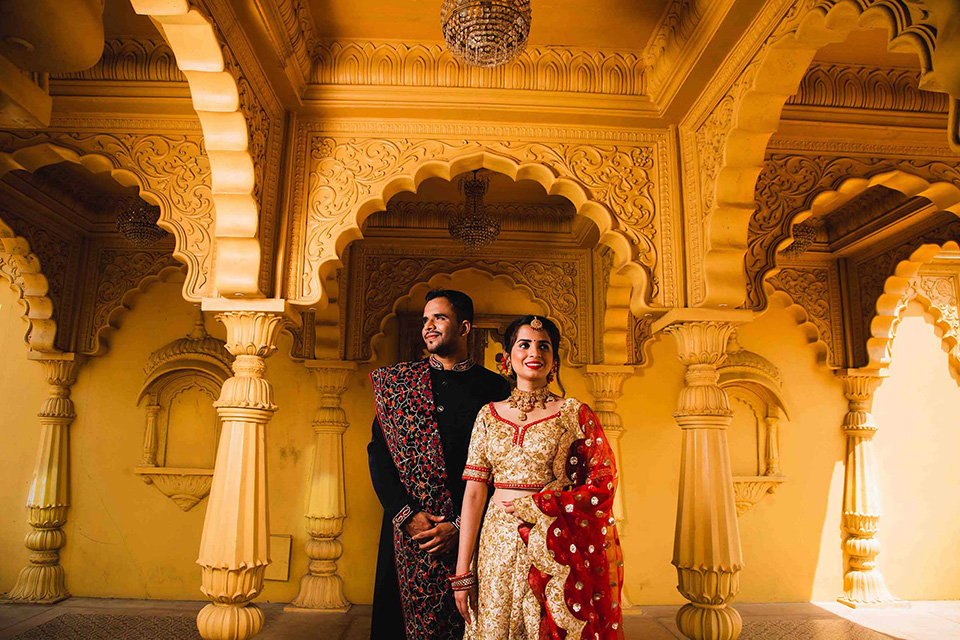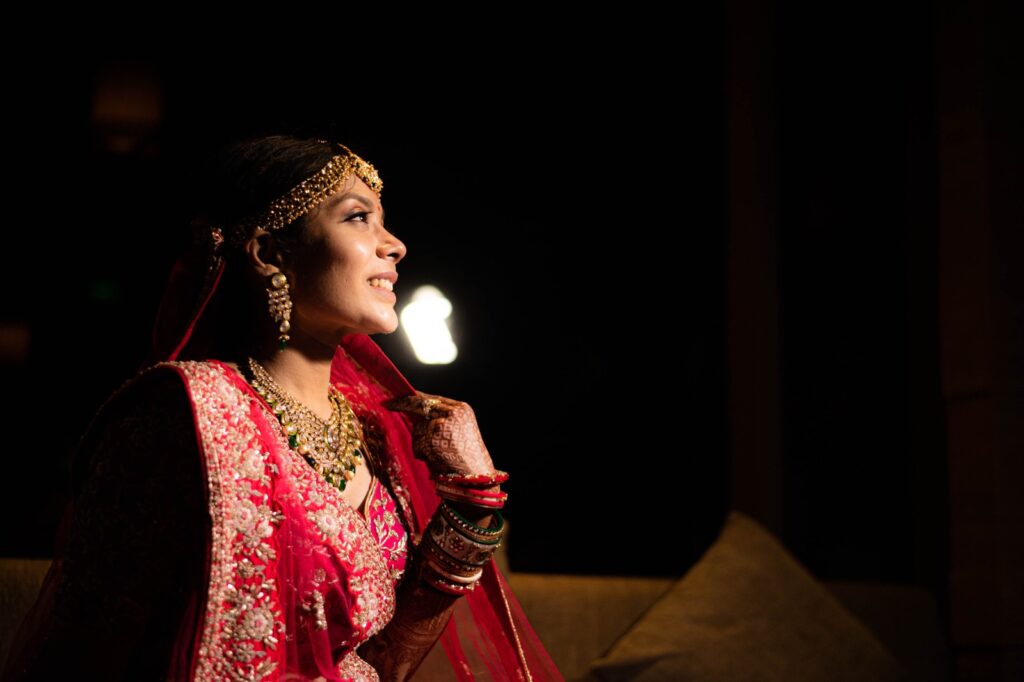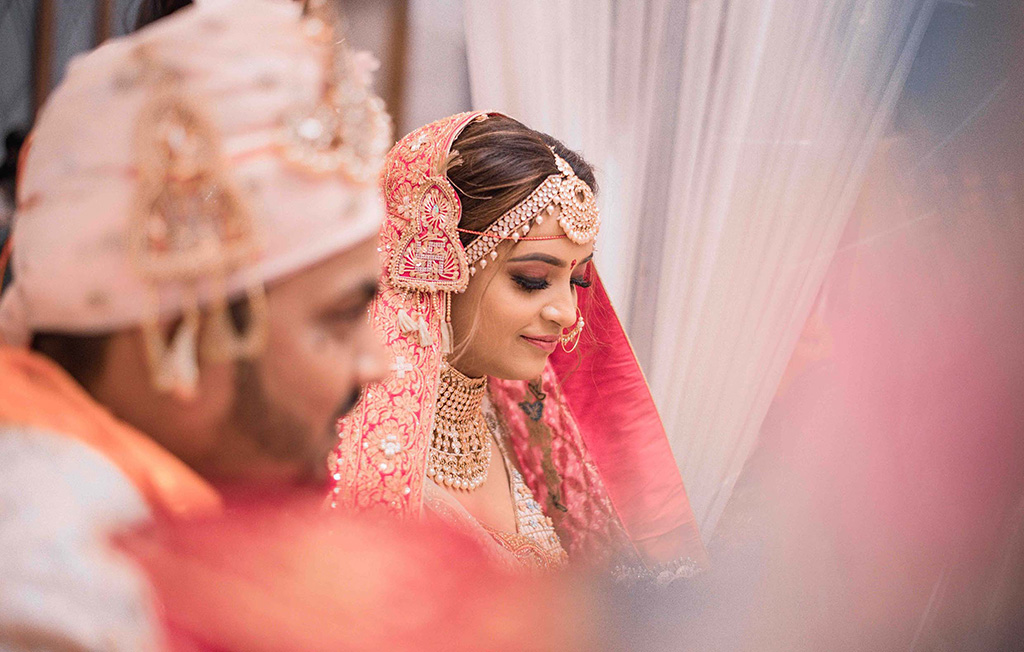Introduction wedding photography
wedding photography is one of the most cherished forms of wedding photography, capturing one of the most important milestones in a person’s life—the day they get married. It goes beyond merely taking pictures; wedding photography is a form of storytelling, an art that freezes moments in time to be revisited for years to come. For couples, wedding photography photos become priceless treasures that preserve the joy, emotions, and magic of the day. For wedding photography, wedding photography represents a unique blend of technical skill, creativity, and a deep understanding of human emotion.
In this article, we will explore wedding photography in its entirety: its historical significance, what makes it unique, the role of the photographer, the skills required, the challenges faced, and the positive and negative aspects of this profession.
wedding photography is an art form that captures the most important moments of a couple’s life: their wedding day. It’s an essential service for many couples, as it preserves the memories of their special day for years to come. wedding photography However, like any other profession, wedding photography comes with its own set of challenges and rewards. In this article, we will delve into the many facets of wedding photography, wedding photography providing an in-depth exploration of the good and the bad aspects. We will examine both the positive and negative sides, offering a balanced perspective on what to expect when hiring a wedding photographer or even becoming one.
The Importance of wedding photography
wedding photography is often seen as a rite of passage, especially in cultures where marriage is considered a sacred institution. A wedding photography plays an essential role in capturing the ceremony, the candid moments, the laughter, and the emotions, all of which are memories the couple and their families will cherish forever. wedding photography serves not only as a documentation of the day but also as a form of storytelling—each photograph is a snapshot of love, joy, and the beginning of a new chapter.
For many couples, the wedding photography are the only lasting physical memento of their wedding day. Unlike other events in life, a wedding is typically a one-time experience, and a well-captured image has the power to immortalize the most fleeting moments. When chosen carefully, a wedding photographer can provide creative, timeless, and high-quality images that evoke deep emotional responses when revisited years later.
However, the process is not always as simple as it seems. wedding photography requires skill, preparation, and the ability to handle pressure. A wedding day is full of variables—changing lighting, unpredictable weather, and the emotions of the participants—that can significantly impact the outcome of the photos.
The Positive Aspects of wedding photography
1. Capturing Timeless Memories wedding photography
wedding photography One of the biggest positives of wedding photography is its ability to preserve memories. wedding photography These photos will allow couples to relive their big day over and over again. wedding photography Photographs capture moments that can never be repeated—like the first look, the vows exchanged, the tears of joy, and the laughter of family and friends. These images are timeless treasures that are passed down through generations.
2. Artistic Expression wedding photography
wedding photography often have the opportunity to showcase their creativity and artistic vision. From posing and composition to editing, wedding photography is an art form that requires both technical knowledge and an eye for detail. Great photographers take pride in transforming an ordinary scene into something extraordinary, and their unique perspective can lead to stunning photos that are more than just snapshots. wedding photography They can turn simple moments into pieces of art, leaving the couple with beautiful images to treasure forever.
3. Creating Lasting Relationships wedding photography
For couples, their wedding photography is often someone they’ll work with for many months leading up to the wedding day. This long-term relationship can create a strong bond of trust and understanding between the photographer and the couple. A good wedding photography will take the time to get to know their clients, ensuring that their personalities and love story are captured in the photos. This trust and rapport can lead to a more relaxed atmosphere on the big day, resulting in more natural, authentic images.
4. A Valuable Investment wedding photography
While wedding photography can be expensive, it is a worthwhile investment for most couples. The photographs from a wedding day are priceless and can never be recreated. Given their emotional and sentimental value, wedding photography hiring a professional photographer is seen by many as a smart investment. These photos will last for a lifetime, becoming a cherished heirloom for future generations.
5. Storytelling Through Images wedding photography
A wedding photography has the ability to tell a beautiful and intricate story through images. Each photo, from the pre-ceremony preparation to the last dance, contributes to the narrative of the day. A skilled photographer knows how to capture the emotions, the small details, and the essence of the couple’s relationship. wedding photography The images taken during the ceremony, speeches, and reception all come together to form a beautiful, cohesive story that tells the couple’s unique love story.
6. Capturing Unique Moments wedding photography
wedding photography are experts at capturing the unscripted and unique moments of the day. Whether it’s a candid shot of a bride laughing with her friends or a father wiping away a tear during the father-daughter dance, these authentic moments are often the most treasured. wedding photography A great photographer can capture the essence of the day with real, unposed shots that convey emotion and sentiment.
7. Generational Impact wedding photography
wedding photography Wedding photos do not just serve as a memory for the couple—they also impact future generations. wedding photography These photographs will be passed down to children, grandchildren, and even great-grandchildren. They become part of family history, a tangible link to the past that can tell stories for generations to come. Over the years, these images gain historical and sentimental value.

The Negative Aspects of wedding photography
While wedding photography is a rewarding profession and service, it also comes with its share of challenges and drawbacks. Below are some of the negative aspects that potential clients and photographers should consider.
1. High Pressure wedding photography
wedding photography One of the most significant drawbacks of wedding photography is the immense pressure that comes with the job. wedding photography Weddings are one-time events, and there is no opportunity to redo a shot if it goes wrong. wedding photography The photographer is expected to capture all of the key moments, often without any room for mistakes. If the photos are poor or not up to the couple’s expectations, wedding photography the consequences can be devastating, as the memories of the wedding day are irreplaceable.
2. Long Hours wedding photography
wedding photography often work long hours, sometimes from early morning until late into the night. This means being on your feet for many hours, dealing with the physical demands of shooting in varying conditions, and wedding photography sometimes working in challenging lighting environments. As a result, wedding photographers can experience fatigue and exhaustion, which can affect the quality of their work. It is not uncommon for wedding photography to spend days editing images post-event, which can further extend their work hours.
3. Stressful Environment wedding photography
wedding photography The environment at weddings can often be chaotic and unpredictable. From dealing with demanding clients to managing unruly wedding guests, photographers must stay calm and focused under pressure. wedding photography There are countless details to coordinate, such as timing, lighting, and special requests, and if things go wrong, the wedding photography is often the one who is blamed. The stress of handling such a high-stakes event can be overwhelming for some photographers.
4. Expensive Equipment wedding photography
To produce high-quality wedding photography, photographers need to invest in expensive camera gear and accessories. Professional-grade cameras, lenses, and lighting equipment can cost thousands of dollars. Moreover, wedding photography must maintain and update their gear regularly to stay competitive. This constant financial outlay is a significant burden, especially for those just starting in the wedding photography business.
5. Difficult Clients wedding photography
wedding photography In some cases, wedding photographers may face demanding or difficult clients who have unrealistic expectations. wedding photography Couples may have a very specific vision of how they want their wedding photos to look, and if the photographer is unable to meet these expectations, it can lead to disappointment and conflict. wedding photography Managing expectations is a crucial aspect of wedding photography, but even the most experienced wedding photography may occasionally struggle with challenging clients.
6. Weather Challenges wedding photography
For outdoor wedding photography, photographers are at the mercy of the weather. Rain, strong winds, or extreme temperatures can make it difficult to capture the perfect shot. wedding photography Though skilled photographers can adapt to different environments, weather can still pose a significant challenge, especially if the wedding is scheduled during a season prone to unpredictable conditions.
7. Cost of wedding photography
The cost of wedding photography can be a significant drawback for many couples. Professional photographers charge a premium for their services, and prices can vary widely depending on experience, location, and the level of expertise. For couples on a tight budget, the cost of hiring a photographer may be prohibitive. wedding photography Additionally, there may be extra costs for add-ons such as albums, prints, or additional hours of coverage.

History of wedding photography
The practice of capturing weddings in photography dates back to the 19th century. Before the invention of photography, wedding photography weddings were remembered through painted portraits or written accounts. Early wedding photographs were often quite formal and posed, due to the limitations of photographic technology at the time. The first wedding photographs were taken using daguerreotype or tintype techniques, which required long exposure times and heavy equipment.
In the early years of wedding photography, the expense and complexity of having a wedding captured on film meant that it was mostly reserved for the wealthy. However, as photography technology advanced, it became more accessible to the middle class, and by the 20th century, wedding photography had become a common practice.
In the 1980s and 1990s, the digital revolution transformed the wedding photography industry. With the advent of digital cameras, wedding photography no longer had to worry about developing film or the costs associated with film photography. This led to greater creative freedom and the ability to take an unlimited number of shots, ensuring that no moment was missed. Digital photography also made it easier to edit photos, giving photographers more control over the final product.
Today, wedding photography encompasses a wide variety of styles, including traditional, photojournalistic, fine art, and contemporary approaches, allowing couples to choose a wedding photography whose style matches their vision for the day.
The Role of a wedding photography
A wedding photography role is not limited to simply taking photographs. It involves a deep understanding of the couple’s vision for their wedding day and the ability to capture that vision through the lens. Here are the key aspects of a wedding photography responsibilities:
- Planning and Consultation:
Before the wedding photography day, the photographer will typically meet with the couple to discuss their preferences, specific moments they want to capture, and any special requests. This meeting allows the photographer to understand the couple’s style, the timeline of the wedding, and any logistical challenges they might face. - Pre-Wedding Shoot (Optional):
wedding photography Some couples opt for an engagement session or a pre-wedding shoot. This gives the couple a chance to get comfortable in front of the camera and allows the photographer to get a better sense of their dynamic and comfort levels. - Capturing Key Moments:
On the day of the wedding photography, the photographer is responsible for capturing the key moments, such as the ceremony, vows, the first kiss, the family portraits, and the reception. A good photographer will be able to work unobtrusively and capture candid moments that reflect the true emotions of the day. - Details and Atmosphere:
Beyond the people, wedding photography also capture the details—the decorations, the flowers, the cake, and the rings. These images help tell the story of the day and highlight the unique elements that make each wedding special. - Editing and Post-Processing:
After the wedding, the wedding photography will go through the images, selecting the best ones, and editing them for color correction, lighting, and composition. This step transforms the raw images into polished, professional-quality photos. - Delivering the Final Product:
Once the editing process is complete, the wedding photography will deliver the final images to the couple, often in the form of a digital gallery, prints, or even a custom album. The couple can choose how they wish to display or share the photos.
Styles of wedding photography
There are various styles of wedding photography, and each photographer may specialize in one or combine multiple styles. Understanding these styles helps couples choose a photographer who can best capture their wedding vision.
- Traditional (Classic) Wedding Photography: Traditional wedding photography focuses on posed shots, often with formal, structured compositions. This style typically involves capturing key moments like the couple walking down the aisle, the exchange of rings, family group shots, and staged bridal portraits. This style is timeless, offering elegant and polished images.
- Photojournalistic Wedding Photography: In contrast to the traditional approach, photojournalistic wedding photography emphasizes candid shots. The photographer captures the day as it unfolds, documenting moments without directing or interfering. The aim is to capture raw, authentic emotions and the story of the day. Photojournalism offers a more documentary-style approach, where the couple and their guests are captured in unposed moments.
- Fine Art Wedding Photography: Fine art wedding photography takes a more creative, artistic approach to capturing the wedding day. Photographers who specialize in this style often focus on composition, lighting, and mood to create visually stunning and artistic images. They may use special techniques like film photography or experimental editing to achieve a unique look.
- Contemporary Wedding Photography: Contemporary wedding photography blends traditional and modern approaches. wedding photography might incorporate elements of fine art or photojournalism but with a more modern aesthetic. This style often includes creative poses, unique angles, and more experimental editing techniques.
- Destination Wedding Photography: Destination wedding photography is a niche within the wedding photography industry, focusing on weddings that take place in exotic or remote locations. Photographers in this field must be skilled at adapting to new environments, understanding cultural nuances, and working with natural light.

Skills Required for wedding photography
wedding photography is a complex field that requires a wide range of skills. Photographers must possess both technical expertise and the ability to connect with clients emotionally. Some of the key skills required include:
- Technical Proficiency: wedding photography need to be experts in their equipment. They must understand how to use cameras, lenses, lighting, and other gear to capture high-quality images in a variety of settings and lighting conditions. This includes understanding exposure settings, white balance, and depth of field.
- Attention to Detail: wedding photography are full of small details that make the day unique. A photographer must have a keen eye for detail to capture these elements, such as the intricate design of the wedding cake, the bride’s shoes, or the couple’s wedding rings.
- People Skills: A wedding photography spends the entire day interacting with the couple, their families, and guests. Building rapport with people is crucial, as it helps create a comfortable environment and ensures the photographer can capture candid and natural moments.
- Creativity: wedding photography is an art, and creativity plays a huge role. A photographer must be able to see ordinary moments and transform them into extraordinary photographs. Whether through creative posing, unique angles, or imaginative compositions, creativity is essential for producing standout images.
- Time Management: wedding photography are fast-paced, and there’s often a lot of pressure to capture specific moments at the right time. A photographer must be able to manage their time effectively to ensure they don’t miss key moments while also maintaining a relaxed atmosphere.
- Post-Processing and Editing: After the wedding, wedding photography spend considerable time editing photos to perfect the colors, exposure, and overall look of the images. Proficiency in editing software such as Adobe Lightroom and Photoshop is essential for producing high-quality, polished images.
Challenges in wedding photography
While wedding photography can be incredibly rewarding, it comes with its fair share of challenges. Here are some of the common difficulties faced by wedding photography:
- Unpredictable Weather: Outdoor weddings can be a gamble when it comes to weather. Photographers must always be prepared for rain, wind, or intense sunlight, which can affect the quality of the photos. A skilled wedding photography must be able to adapt to various weather conditions and still deliver great results.
- Long Working Hours: wedding photography often requires photographers to work long hours. A wedding day can span from early morning preparations to late-night dancing and celebrations. This can be exhausting, both physically and mentally, especially when photographers are expected to stay focused and creative throughout the day.
- Client Expectations: Wedding clients often have high expectations for their wedding photos. They may have a specific vision in mind, and meeting those expectations can be stressful for photographers. wedding photography Communicating clearly with clients before the wedding is essential to understanding their needs.
- Handling Multiple Tasks: A wedding photographer is often responsible for a multitude of tasks on the day of the event, including directing group photos, setting up lighting, and ensuring that they don’t miss important moments. This multitasking requires excellent organizational skills.
- Emotional Pressure: wedding photography are capturing one of the most important days in a couple’s life, and there is immense pressure to get everything right. Mistakes are not easily forgiven, as the couple will cherish these photos for years. Managing that pressure is essential to delivering high-quality work.
1. Choose the Right wedding photography
The foundation of great wedding photography begins with selecting the right photographer. The best wedding photography are not just technical experts—they are storytellers who understand how to capture the unique moments of a wedding day. When searching for a wedding photography, consider the following:
a. Review Their Portfolio wedding photography
The first step in finding a great wedding photography is to review their portfolio. Look for a style that resonates with you, whether it’s photojournalistic, fine art, traditional, or a blend of styles. Pay attention to how the photographer handles lighting, composition, and storytelling. Make sure the portfolio reflects consistency in quality and style.
b. Personality and Compatibility wedding photography
Your wedding photography will be with you throughout your day, often in close proximity during intimate moments. wedding photography It’s essential to hire someone whose personality meshes well with yours. A photographer who is approachable, friendly, and confident will make you feel more comfortable, which results in more natural, genuine moments being captured.
c. Experience with Weddings wedding photography
Choosing a wedding photography who has experience in wedding photography is crucial. Weddings are dynamic events with lots of moving parts, so an experienced wedding photography will be able to adapt to different scenarios (e.g., changing lighting, unpredictable weather, large groups of guests). They will know how to direct group shots while still capturing candid moments.

2. Pre-Wedding Planning wedding photography
To ensure a seamless and stress-free photography experience on the wedding day, thorough planning before the event is essential. Here are the best ways to prepare:
a. Discuss Your Vision wedding photography
Before the wedding, meet with your wedding photography to discuss your vision. This includes the style of photos you want, any special moments you want to capture, and the overall mood of the day. Are you more inclined toward candid shots or formal portraits? Would you like your photos to feel relaxed and spontaneous, or do you want a more polished, posed look?
b. Create a Shot List wedding photography
While a good photographer will be able to anticipate key moments, it’s always helpful to create a shot list. This list should include must-have images, such as the bride and groom walking down the aisle, the first kiss, first dance, group photos with family members, and any special details like the rings, invitations, and wedding attire.
c. Scout the Locations wedding photography
If possible, visit your wedding venue with your photographer before the big day. This allows them to get a sense of the lighting, the layout, and any potential challenges. If you’re getting married outdoors, the photographer can scout the area for beautiful backdrops and ensure they’re prepared for changes in lighting or weather.
d. Discuss the Timeline wedding photography
A well-organized wedding day schedule is essential for smooth photography. Discuss the wedding day timeline with your photographer to ensure there’s enough time for key moments, including pre-wedding shots, the ceremony, family portraits, and the reception. Make sure to build in some buffer time in case things run late.
3. Capturing Key Moments with Authenticity wedding photography
On the wedding photography day, the photographer’s role is to capture the significant moments, emotions, and memories as they unfold naturally. Here are some of the most important moments to focus on:
a. Pre-Ceremony Shots wedding photography
The best wedding photography photos often begin long before the ceremony. Capture candid moments of the bride and groom getting ready, surrounded by their closest family and friends. wedding photography This includes shots of the bride putting on her dress, the groom adjusting his tie, and the anticipation in the air. These moments help set the stage for the day’s emotions.
b. The First Look wedding photography
wedding photography For many couples, the first look is one of the most emotional moments of the day. Whether you choose to see each other before the ceremony or wait until the walk down the aisle, this moment should be captured in a way that reflects the couple’s emotion. The wedding photography should focus on the expressions and the intimate connection shared between the couple.
c. Ceremony Highlights wedding photography
wedding photography The ceremony itself is filled with key moments: walking down the aisle, the exchange of vows and rings, the first kiss, and the newlyweds’ first steps as a married couple. These are the moments that define the wedding and should be captured with attention to detail. The photographer should aim to capture the couple’s emotions during these pivotal moments, as well as the reactions of guests.
d. Candid Shots of Guests wedding photography
wedding photography Some of the best wedding photos come from candid moments. Capturing the reactions of guests as they laugh, cry, or celebrate adds authenticity to the wedding album. wedding photography should stay observant, ready to capture moments of joy, surprise, and emotion.
e. Group Photos wedding photography
wedding photography Family portraits are an essential part of wedding photography. However, they don’t have to be stiff or overly posed. While it’s important to get the classic group shots, great photographers will know how to make family photos feel natural. Ensure that you’ve prepared a list of key people for these shots so that they can be done quickly and efficiently.
f. The Reception: Dancing and Celebration wedding photography
wedding photography The reception is a time to let loose, celebrate, and have fun. The best way to capture this is by focusing on the energy of the moment. wedding photography The couple’s first dance, the speeches, and spontaneous dancing provide fantastic opportunities for candid, emotional shots. Photographers should also focus on small, intimate moments during the reception, like guests sharing a laugh or a heartfelt moment with the couple.

4. Emphasizing the Details wedding photography
wedding photography Weddings are full of beautiful details, and a great photographer knows how to highlight these. wedding photography Focus on capturing the little things that make the wedding unique, such as:
- The bride’s dress, shoes, and accessories
- The wedding rings
- The floral arrangements and bouquets
- The table settings and decorations
- The cake and dessert table
- Personalized elements (e.g., handwritten vows, signage)
wedding photography These details add layers to the wedding story and create a comprehensive visual narrative of the day. Taking time to photograph these moments ensures that every aspect of the celebration is remembered.
5. Post-Wedding Editing and Delivery wedding photography
After the wedding photography, the photographer’s work isn’t over. The post-production phase is where the raw images are refined to create the final product. The best way to approach editing and delivery is:
a. Editing with Care wedding photography
wedding photography The editing process is crucial for enhancing the photos while keeping them true to the couple’s vision. wedding photography Skilled photographers will adjust exposure, color balance, and lighting to create images that feel natural but polished. Many photographers also offer black-and-white versions of select photos for a timeless touch.
b. Timely Delivery wedding photography
wedding photography Couples are eager to see their wedding photos, so timely delivery is essential. Depending on the package, photographers may provide a digital gallery within a few weeks to a couple of months. Some photographers also offer beautifully crafted wedding albums, which can serve as a physical representation of the couple’s special day.
c. The Wedding Album wedding photography
wedding photography In addition to digital galleries, many couples choose to invest in a wedding album that showcases the best photos from the day. A high-quality, professionally designed album is a beautiful way to relive the wedding day and share the memories with future generations.
6. Tips for Couples to Get the Best Photos wedding photography
While the wedding photography plays the key role in capturing great wedding photos, couples can also take steps to ensure the best results:
- Be Relaxed and Natural: The more relaxed you are, the more natural and authentic your photos will be. Trust your wedding photography and enjoy the moments as they come.
- Communicate Your Preferences: If you have specific ideas for your wedding photos, communicate these with your wedding photography. Share any inspiration you have, but also be open to their creative suggestions.
- Be Prepared for Group Photos: Organize your family and bridal party for group shots, so you don’t waste time during the session. Ensure everyone is present and ready.
- Take Care of Your Appearance: While your wedding photography will do their best to capture the beauty of the day, paying attention to your attire, hair, and makeup can help you look your best in photos.

Conclusion wedding photography
wedding photography is more than just capturing pictures; it’s about capturing moments, emotions, and stories that will last forever. The best way to approach wedding photography is to choose a skilled, experienced photographer whose style aligns with your vision. With careful planning, attention to detail, and a relaxed atmosphere, wedding photography can result in stunning, meaningful images that you’ll cherish for the rest of your life. Whether it’s the candid smiles, the emotional vows, or the joyous celebration, the photographs from your wedding day will serve as a lasting reminder of the love and happiness shared on that special occasion.
wedding photography is an incredibly fulfilling profession and a vital part of the wedding industry. It requires a combination of technical expertise, creativity, and strong interpersonal skills. wedding photography not only capture the big moments but also the small details, creating a visual story of the couple’s special day. Despite its challenges, the rewards of wedding photography are significant, as photographers have the unique privilege of preserving memories that last a lifetime.
For couples, hiring the right wedding photography is an investment in the memories that will be cherished for generations. Whether opting for a traditional or more modern approach, wedding photography offers a wide array of styles to match every couple’s personality and vision.
In the end, wedding photography is not just about taking pictures—it’s about capturing emotions, telling stories, and freezing time. It’s an art form that allows people to look back on the happiest moments of their lives and remember the love, joy, and beauty that filled the air on their wedding day.
wedding photography is both a challenging and rewarding profession. It allows photographers to capture precious moments that will last a lifetime and to create beautiful works of art that tell the unique love stories of each couple. For couples, it offers a tangible reminder of their wedding day—a keepsake that will evoke memories for years to come.
However, the job comes with its fair share of difficulties. The pressure to perform perfectly on a single day, long working hours, and the challenges of unpredictable weather or difficult clients are all part of the job. For photographers, the financial investment in equipment and the stress of managing such a high-stakes event can be taxing.
Ultimately, the decision to hire wedding photography a wedding photographer—or to pursue a career in wedding photography—requires careful consideration. While it’s a field that offers many rewards, both emotionally and financially, it also requires hard work, dedication, and the ability to handle stress. For those who are passionate about photography and love capturing moments of joy, wedding photography can be an incredibly fulfilling career or service.












